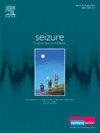The efficacy and safety of the ketogenic diet in infantile epileptic spasm syndrome: a meta-analysis
IF 2.8
3区 医学
Q2 CLINICAL NEUROLOGY
引用次数: 0
Abstract
Objective
To systematically evaluate the efficacy and safety of the ketogenic diet (KD) in treating infantile epileptic spasm syndrome (IESS).
Methods
A comprehensive search of electronic databases was conducted to identify prognostic studies on the use of KD for IESS. Data from eligible studies were extracted and meta-analyzed using a random-effects model.
Results
The meta-analysis indicated that the proportion of children experiencing a ≥ 50% reduction in spasticity episodes at 3, 6, and 12 months post-KD initiation was 63% (95% CI: 0.52–0.73), 66% (95% CI: 0.56–0.76), and 60% (95% CI: 0.43–0.77), respectively. Seizure-free periods occurred in 21% (95% CI: 0.11–0.32), 21% (95% CI: 0.12–0.30), and 19% (95% CI: 0.08–0.31) of patients at 3, 6, and 12 months, respectively. KD treatment also significantly improved electroencephalogram (EEG) abnormalities (OR: 54%, P < 0.01) and contributed to the enhancement of motor, cognitive, and language development (OR: 56%, P < 0.01). Common adverse events included gastrointestinal issues (427/1313, 32%) and disturbances in the internal environment (428/1313, 32%), though most were mild and manageable. Evidence is predominantly low-certainty with significant publication bias.
Conclusion
The ketogenic diet is an effective and safe treatment option for children with IESS who are unresponsive to antiepileptic drugs.
生酮饮食对婴儿癫痫痉挛综合征的疗效和安全性:一项荟萃分析
目的系统评价生酮饮食(KD)治疗小儿癫痫痉挛综合征(IESS)的疗效和安全性。方法对电子数据库进行全面检索,以确定使用KD治疗IESS的预后研究。从符合条件的研究中提取数据,并使用随机效应模型进行meta分析。结果荟萃分析显示,在kd开始后3、6和12个月痉挛发作减少≥50%的儿童比例分别为63% (95% CI: 0.52-0.73)、66% (95% CI: 0.56-0.76)和60% (95% CI: 0.43-0.77)。在3个月、6个月和12个月时,分别有21% (95% CI: 0.11-0.32)、21% (95% CI: 0.12-0.30)和19% (95% CI: 0.08-0.31)的患者出现无癫痫发作。KD治疗还显著改善了脑电图(EEG)异常(OR: 54%, P < 0.01),并有助于增强运动、认知和语言发育(OR: 56%, P < 0.01)。常见的不良事件包括胃肠道问题(427/1313,32%)和内部环境紊乱(428/1313,32%),尽管大多数是轻微和可控的。证据主要是低确定性的,具有显著的发表偏倚。结论生酮饮食对抗癫痫药物无反应的IESS患儿是一种安全有效的治疗方法。
本文章由计算机程序翻译,如有差异,请以英文原文为准。
求助全文
约1分钟内获得全文
求助全文
来源期刊

Seizure-European Journal of Epilepsy
医学-临床神经学
CiteScore
5.60
自引率
6.70%
发文量
231
审稿时长
34 days
期刊介绍:
Seizure - European Journal of Epilepsy is an international journal owned by Epilepsy Action (the largest member led epilepsy organisation in the UK). It provides a forum for papers on all topics related to epilepsy and seizure disorders.
 求助内容:
求助内容: 应助结果提醒方式:
应助结果提醒方式:


